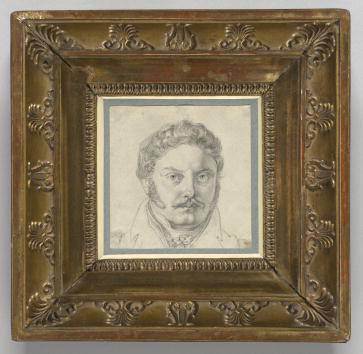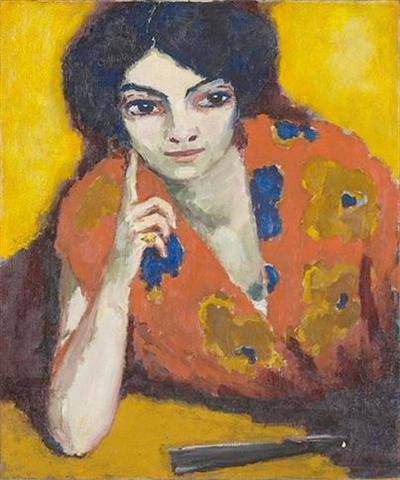
Carl Barth (German, 1787-1853)
Portrait of Peder Hjort, about 1818—1819.
Pencil on wove paper.
The J. Paul Getty Museum, Los Angeles.
Germanic drawings, 1770—1900, at Getty Museum ‘Spirit of An Age: Drawings from the Germanic World, 1770—1900’ highlights the Getty Museum’s collection of German and Austrian drawings from the 18th through the early 20th centuries, including two drawings by Gustav Klimt. March 29—June 19, 2011]]>
Source: Getty Museum / theartwolf.com
As the world’s wealthiest art museum, the Getty often shocks the art world with its acquisitions of masterpieces such as Turner’s ‘Modern Rome—Campo Vaccino’ in 2010 or Gauguin’s ‘Arii Matamoe’ in 2008. And in the past few years, the Museum has also acquired an important group of German and Austrian drawings from the 18th through the early 20th centuries, which will be unveiled for the first time in this exhibition.
The exhibition is organized in two thematic sections: ‘Views of Italy and the Homeland’ and ‘Myths, History, and Daily Life’
Views of Italy and the Homeland
While Berlin, Vienna, and other germanic cities were the most vibrant cultural centers of the Germanic world, it was Rome the city that, according to the press note of the exhibition, “came close to being a leading center for German artists”. Carl Rottmann’s ‘The Ruins of the Imperial Palaces in Rome’, created in 1831; and Thomas Ender ‘View of the Residence of Archduke Johann in Gastein Hot Springs’, created about 1829—32; are among the highlights of this section. Both works were purchased by the Museum in 2009.
Myths, History, and Daily Life
This section focuses on two important anti-academic movements from the 19th Century. The first of them, the Nazarenes, was established in 1809, and it is represented in the exhibition with works like Wilhelm von Schadow’s ‘Joseph Wintergerst in a Floor-length Coat’ (about 1811—13) and Carl Barth’s ‘Portrait of Peder Hjort’ (about 1818—19). The second movement, the Viennese Secession, was formed in 1897 by 19 artists, including Gustav Klimt, whose ‘Portrait of a Young Woman Reclining’ (1897—98) was bought by the Getty Museum in 2009.
Related content
Getty Museum exhibits ‘In Focus: the Tree’
Photography from the New China at the Getty Museum
Follow us on:


